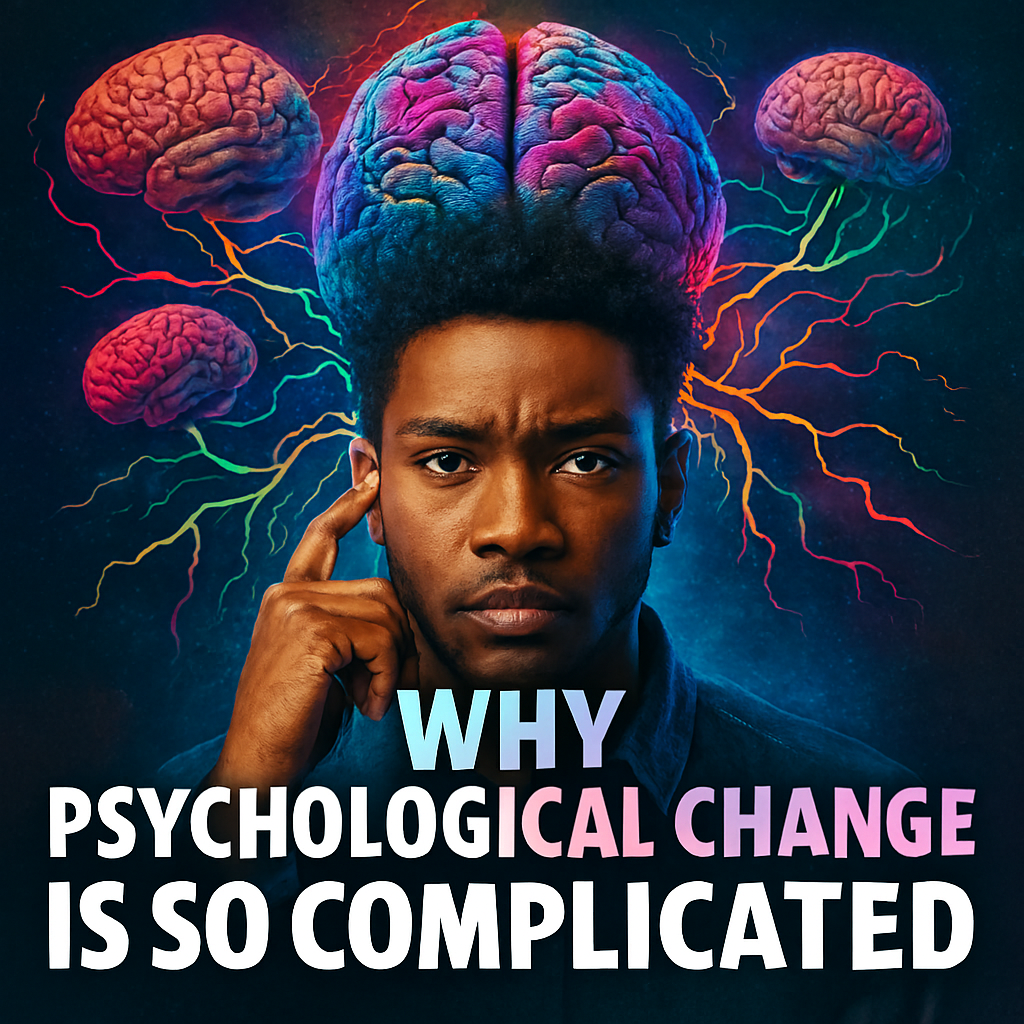
Predicatbilty
Understanding the Invisible Forces That Shape Resistance Biology, Identity, Emotion — The Triad of Internal Conflict
PSYCHOLOGICAL CHANGE
Psychological change is one of the most intricate processes a human can experience. Unlike external adjustments, which are often visible and measurable, internal transformation involves invisible shifts in cognition, emotion, and identity. These shifts are rarely linear and never simple. The human mind is designed to maintain equilibrium, and any disruption to that balance is met with resistance. This resistance is not a flaw but a feature of how the brain protects itself from perceived threats. Change introduces uncertainty, and uncertainty activates survival mechanisms. Even when change is desired, the body and mind may interpret it as danger.
Emotional discomfort, cognitive overload, and identity confusion all emerge as natural responses. The process of change requires sustained effort, clarity, and emotional resilience. It demands the reconfiguration of neural pathways, the rewriting of internal narratives, and the recalibration of social roles. Each layer of resistance is rooted in biology, psychology, and lived experience. Understanding these layers is essential for navigating change with compassion and precision. Psychological change is not a single decision but a series of adaptive recalibrations. It is a process of integration, not elimination. And it begins with understanding how the brain responds to novelty.
THE BRAIN PREFERS PREDICTABILITY
The human brain is biologically wired to favor stability over novelty. Neural pathways are formed through repetition, and once established, they become dominant routes for thought and behavior. These pathways conserve energy and reduce cognitive load, making familiar actions feel effortless. When new behaviors are introduced, the brain must expend more energy to process and execute them. This increased demand triggers resistance, even when the change is beneficial. The limbic system, which governs emotion and survival instincts, interprets unfamiliar experiences as potential threats.
The amygdala, in particular, activates fear responses that discourage exploration. Predictable routines release dopamine, reinforcing the appeal of sameness and discouraging deviation. The prefrontal cortex, responsible for decision-making and impulse control, becomes fatigued under emotional stress. Cortisol, the stress hormone, impairs memory formation and learning during periods of transition.
The default mode network, which governs habitual thought patterns, loops familiar narratives that resist interruption. Sleep disruption, common during change, further impairs cognitive clarity and emotional regulation. Cue–routine–reward cycles embedded in habit loops are difficult to break without deliberate intervention. The hippocampus stores emotional memories that can override logical reasoning. Fear-based memories are recalled more easily than neutral ones, reinforcing avoidance.
The basal ganglia, which stores procedural memory, makes old habits feel instinctive and automatic. Change requires conscious effort to override these systems, which is metabolically expensive. Automatic behaviors bypass reflective thinking, making it harder to implement new strategies. Energy conservation is a core principle of brain function, and change demands more energy than routine. Resistance is not a sign of weakness but a reflection of neurological design. Understanding these mechanisms helps normalize the struggle and reduce self-blame. Psychological change begins with recognizing that the brain is not built for rapid transformation. It is built for survival, and survival favors the known.
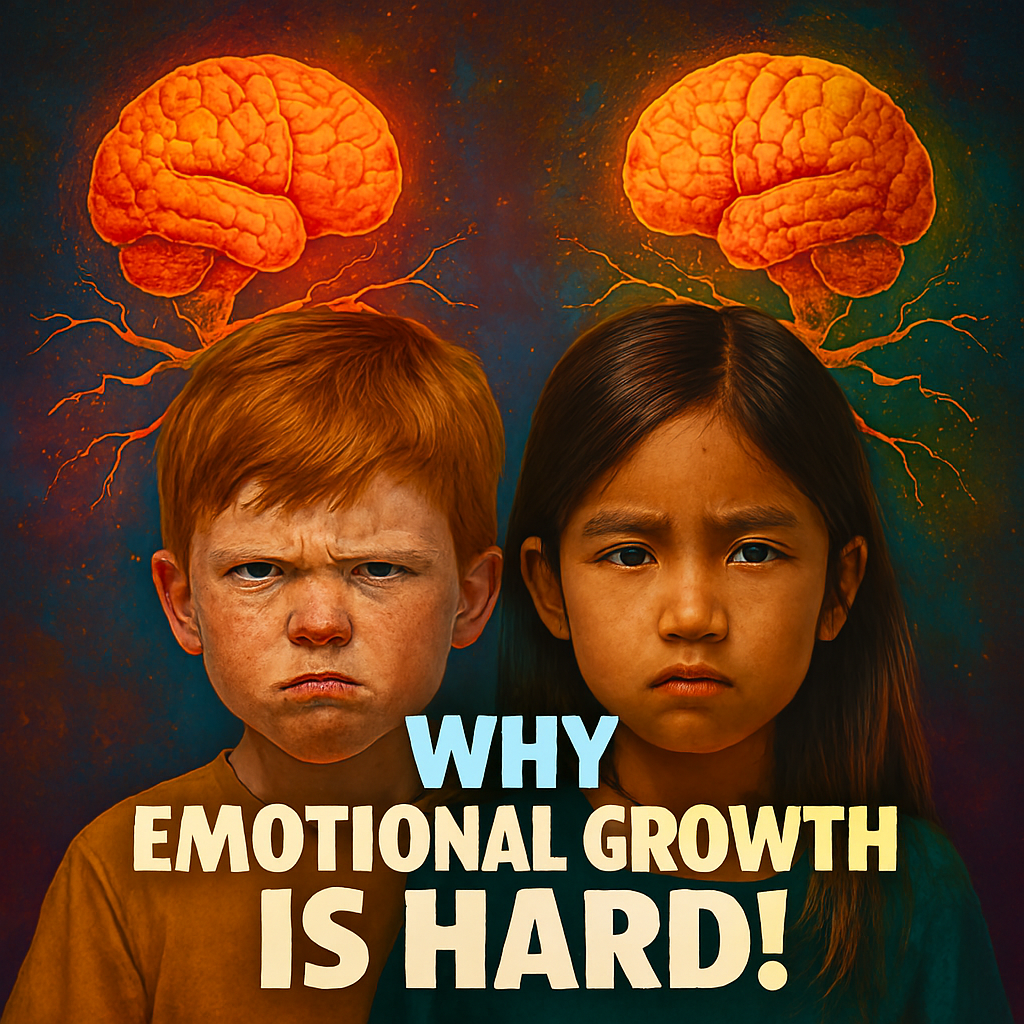
EMOTIONAL BARRIERS TO TRANSFORMATION
Emotions are not passive reactions; they are active forces that shape behavior, perception, and decision-making. Fear of failure often outweighs the desire for success, creating hesitation even when opportunities are clear. Shame anchors individuals to past mistakes, reinforcing a sense of unworthiness that blocks forward movement. Guilt can tether people to outdated roles, making it difficult to redefine their identity without emotional backlash. Avoidance becomes a coping mechanism, leading to procrastination and self-sabotage.
Ambivalence arises when change threatens emotional attachments, creating internal conflict between growth and loyalty. Grief is a common but overlooked component of change, especially when familiar routines or relationships are lost. Anxiety intensifies when outcomes are uncertain, disrupting focus and increasing emotional volatility. Many adults lack fully developed emotional regulation skills, making it harder to navigate the discomfort that change brings. Unprocessed trauma can distort the perception of risk, causing exaggerated responses to minor shifts.
Early attachment patterns influence how individuals respond to relational changes, often triggering subconscious resistance. Emotional intensity can overwhelm cognitive planning, making logical strategies feel inaccessible. Mood instability interferes with consistency, which is essential for sustaining new behaviors. Emotions also influence memory encoding, meaning that emotionally charged experiences are remembered more vividly and can dominate future decision-making.
Self-compassion is a critical tool for resilience, allowing individuals to recover from setbacks without internal punishment. Validation of emotional experience reduces internal conflict and supports psychological integration. Emotional literacy—the ability to identify and articulate feelings—enhances clarity and reduces impulsivity. When emotions go unacknowledged, they often sabotage progress through indirect resistance. Change requires emotional endurance, not just intellectual understanding. Recognizing that resistance is often emotional rather than logical helps reframe the process as a human challenge, not a personal failure.
IDENTITY IS A STABILIZING FORCE
Identity is constructed through repeated roles, beliefs, and social feedback, forming a psychological anchor that stabilizes behavior. When change threatens this structure, the mind resists to preserve continuity. People often reject shifts that contradict their self-image, even when those shifts are necessary for growth. Social roles reinforce identity by providing external validation and expectations. Labels such as “leader,” “parent,” or “artist” become embedded in self-concept and difficult to release. Changing identity can feel like losing part of oneself,
triggering emotional discomfort and existential uncertainty. Belonging is closely tied to consistent identity, and any disruption may threaten social inclusion. Role confusion emerges when old identities no longer fit but new ones are not yet formed. Identity transitions often provoke anxiety, grief, and self-doubt. The ego defends against perceived threats by rationalizing resistance or projecting blame.
Familiar identities offer emotional safety, even when they are limiting or outdated. Adopting new identities requires emotional risk and vulnerability. Self-concept resists contradiction, making it difficult to integrate conflicting traits or desires. Group identity amplifies resistance by enforcing conformity and punishing deviation. Cultural norms shape identity boundaries, influencing what changes feel acceptable or threatening. Changing identity may lead to isolation or rejection from familiar groups. Identity loss can trigger grief similar to bereavement, especially when tied to long-held roles. Rebuilding identity takes time, reflection, and emotional clarity. Resistance often functions as a protective mechanism to preserve coherence. Understanding identity as a stabilizing force helps explain why change is not just a behavioral shift but a symbolic transformation.
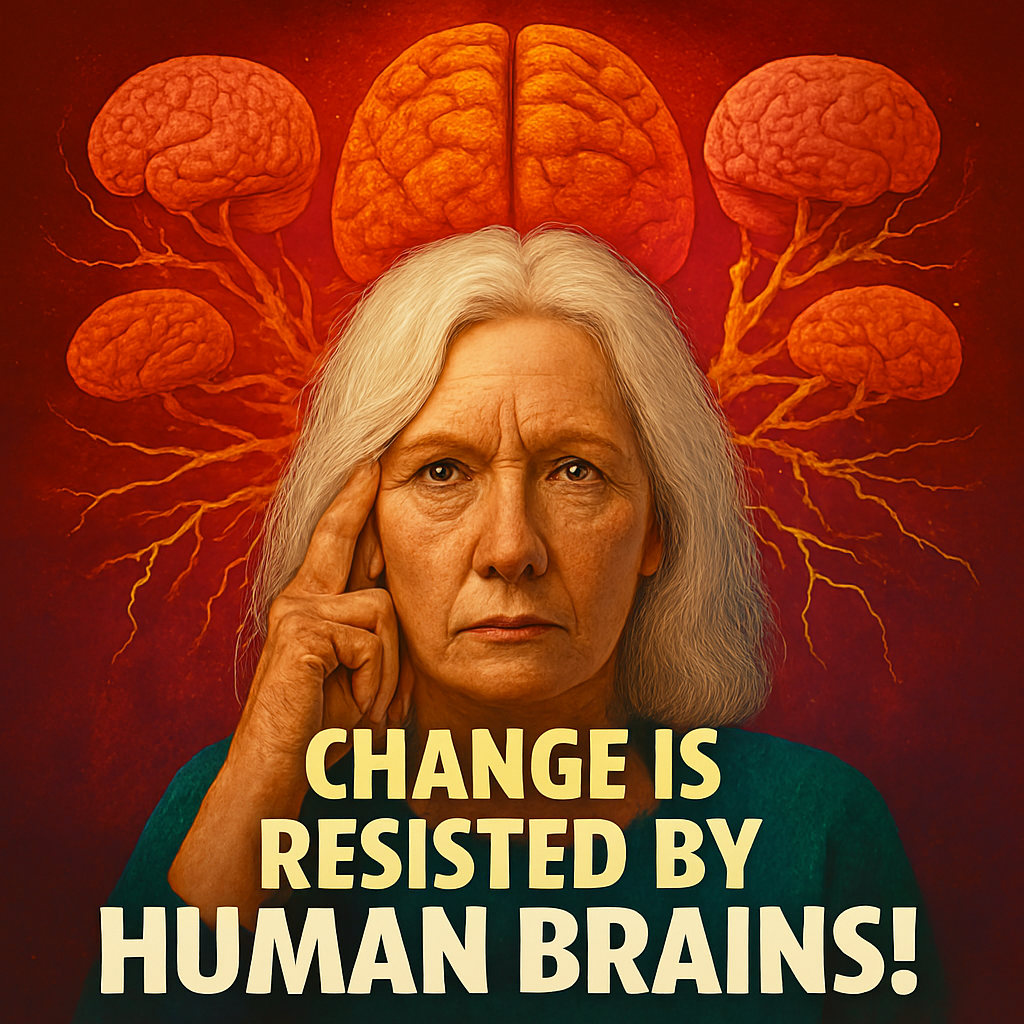
HABIT FORMATION AND DISRUPTION
Habits are the behavioral backbone of daily life, operating below conscious awareness and shaped by repetition. They are stored in procedural memory, primarily within the basal ganglia, making them feel automatic and instinctive. Once a habit loop is formed—comprising cue, routine, and reward—it becomes resistant to change. Breaking a habit requires disrupting this loop and replacing it with a new, equally rewarding pattern. New habits demand consistent repetition before they become neurologically embedded. Under stress, old habits resurface because they require less cognitive effort and offer emotional familiarity. Environmental cues play a powerful role in triggering habitual responses, often bypassing conscious intention.
Habits conserve mental energy, allowing the brain to focus on novel tasks while routine behaviors run in the background. However, this efficiency comes at a cost when those routines become maladaptive. Change demands conscious effort, which is metabolically expensive and emotionally taxing. Routine provides emotional comfort, reinforcing the appeal of familiar behaviors even when they are counterproductive.
Habits are often tied to identity, making their disruption feel like a threat to self-concept. The discomfort of change is not just physical or mental—it is symbolic. New habits feel unnatural at first because they lack the emotional and neurological reinforcement of established routines. Consistency builds neural strength, gradually shifting behaviors from effortful to automatic. Emotional upheaval weakens habit formation, as stress impairs memory consolidation and decision-making.
Habit change requires environmental support, including cues that reinforce new behaviors and remove triggers for old ones. Tracking progress helps reinforce new habits by providing visible evidence of change. Habits shape the texture of daily experience, influencing mood, productivity, and self-perception. Understanding the mechanics of habit formation and disruption is essential for designing sustainable psychological change.
TABLE 1 — NEUROLOGICAL SYSTEMS INVOLVED IN HABIT AND RESISTANCE
| Brain Region | Function | Role in Resistance |
|---|---|---|
| Basal Ganglia | Stores procedural memory | Reinforces automatic behaviors |
| Prefrontal Cortex | Decision-making and impulse control | Fatigues under stress, reducing willpower |
| Amygdala | Threat detection | Flags unfamiliar routines as danger |
| Hippocampus | Memory encoding | Recalls emotional context of habits |
| Default Mode Network | Internal narrative processing | Loops habitual thought patterns |
SOCIAL REINFORCEMENT AND RESISTANCE
Human behavior is deeply influenced by social environments, which act as mirrors and amplifiers of identity. Group norms shape expectations and reinforce consistency, making deviation feel risky or even threatening. When an individual begins to change, they may encounter subtle or overt resistance from their social circle. Peer pressure doesn’t always come in the form of direct confrontation; it often manifests as silence, withdrawal, or skepticism. Social roles create behavioral boundaries, and stepping outside those roles can disrupt relational dynamics. Change may threaten social belonging, especially in tightly knit communities where identity is shared and reinforced. Support systems play a critical role in either enabling or obstructing transformation.
Validation from others can strengthen new behaviors, while criticism can reinforce old ones. Isolation increases psychological resistance, as humans are wired for connection and feedback. Belonging is not just emotional—it is neurological, tied to reward systems that activate during social inclusion. Social comparison affects motivation, often distorting self-assessment and reinforcing doubt. Group identity resists individual change by prioritizing cohesion over personal evolution. Cultural norms shape emotional responses to change, influencing what is considered acceptable or admirable. Social modeling—observing others—can either inspire growth or reinforce stagnation. Change may disrupt relational equilibrium, requiring renegotiation of roles and expectations.
Validation supports transformation by reducing emotional risk and increasing psychological safety. Criticism, even when well-intentioned, can trigger defensive responses that block progress. Social safety enables risk-taking, allowing individuals to explore new behaviors without fear of rejection. Relationships affect emotional regulation, and unstable dynamics can sabotage change efforts. Understanding the social architecture of resistance helps clarify why change is not just internal—it is relational, cultural, and communal.
TABLE 2 — SOCIAL FACTORS THAT INFLUENCE PSYCHOLOGICAL CHANGE
| Social Element | Influence on Behavior | Impact on Change |
|---|---|---|
| Group Norms | Reinforce consistency | Resist deviation from shared roles |
| Peer Pressure | Shapes conformity | Discourages experimentation |
| Validation | Provides emotional safety | Encourages persistence |
| Isolation | Reduces feedback and support | Increases emotional resistance |
| Social Comparison | Alters self-perception | Can distort motivation |
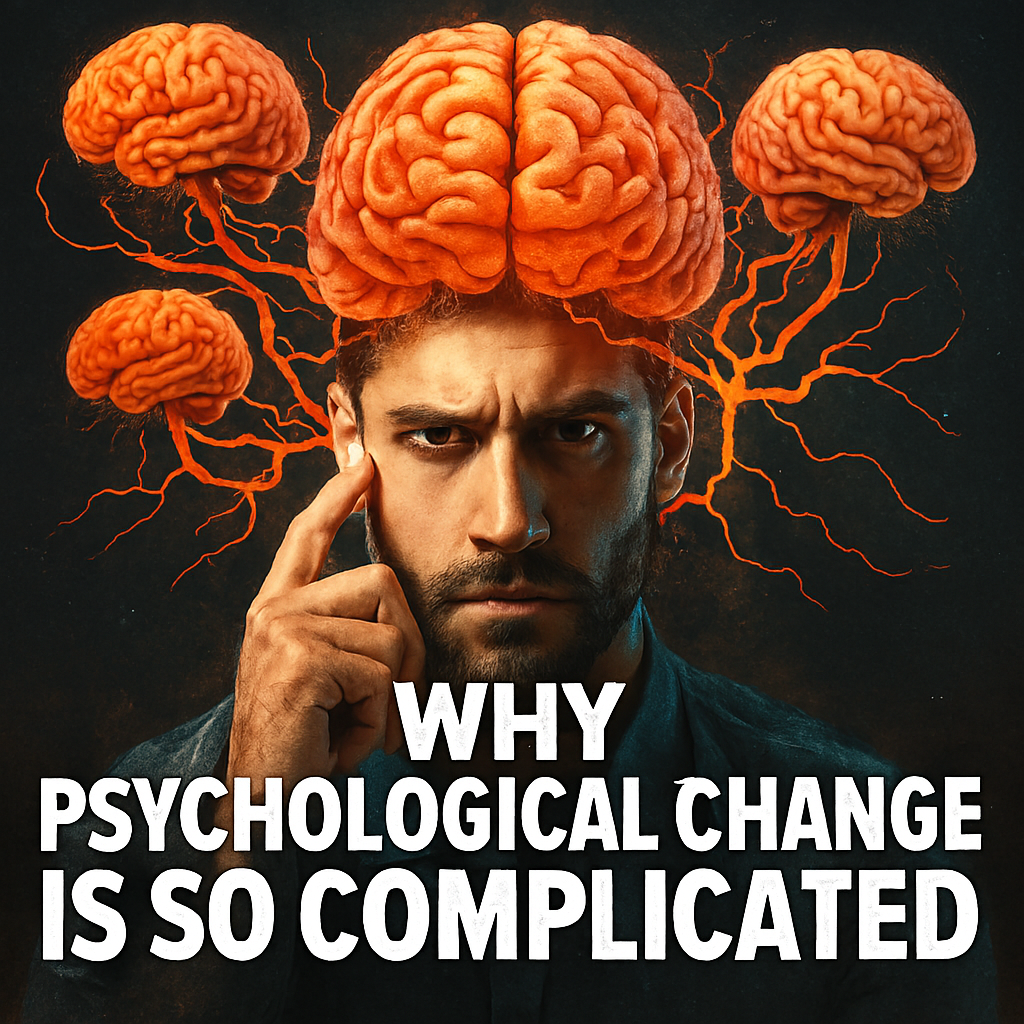
SYMBOLIC ANCHORS AND INTERNAL NARRATIVES
Human beings do not simply act—they interpret. Every behavior is embedded in a symbolic framework that gives it meaning, emotional weight, and narrative coherence. Routines become rituals over time, and those rituals serve as anchors for identity and emotional stability. When change disrupts these symbolic structures, it creates dissonance that goes beyond logic.
Internal narratives—stories we tell ourselves about who we are and why we act—reinforce consistency and resist contradiction. These narratives are not just mental scripts; they are emotional scaffolds that hold together our sense of self. Symbols such as objects, places, or even phrases carry emotional resonance that can either support or sabotage transformation. When a symbol tied to an old identity is removed or altered, it can trigger grief, confusion, or resistance.
People often cling to symbolic anchors not because they are useful, but because they are familiar. Changing these anchors requires emotional processing and narrative revision. The loss of a symbolic role—such as “provider,” “artist,” or “survivor”—can feel like an existential rupture. New symbols must be authentic and emotionally congruent to take root. Forced symbolism, or imposed narratives, often fail to resonate and are rejected by the psyche. Internal stories justify resistance by reinforcing the logic of the past.
They protect emotional coherence, even when they block growth. Rewriting these stories is not just a cognitive task; it is an emotional negotiation. Symbolic clarity supports transformation by aligning new behaviors with meaningful frameworks. Resistance often hides in metaphor, in the language and imagery we use to describe ourselves. Understanding symbolic anchors reveals hidden layers of resistance that are not accessible through logic alone. Change is not just behavioral—it is symbolic, emotional, and narrative. To transform, one must revise the story and reassign the symbols.
TABLE 3 — SYMBOLIC ELEMENTS THAT SHAPE RESISTANCE
| Symbolic Element | Function in Identity | Impact on Change |
|---|---|---|
| Rituals | Reinforce emotional stability | Disrupted routines trigger grief |
| Internal Narratives | Define self-concept | Resist contradiction or revision |
| Roles and Labels | Anchor behavior and belonging | Loss creates identity confusion |
| Objects and Spaces | Carry emotional meaning | Removal can provoke resistance |
| Metaphors | Shape perception and memory | Influence emotional interpretation |
ENERGY AND COGNITIVE LOAD
Psychological change demands energy—mental, emotional, and physical. The brain is an energy-conserving organ, and any shift in behavior or thought requires increased metabolic effort. Decision fatigue sets in quickly when individuals are forced to make repeated choices outside their routine. Cognitive overload impairs clarity, making it harder to prioritize and act. Multitasking reduces the brain’s capacity to process new information, which is essential during transformation. Mental clarity supports change, but stress and distraction erode that clarity. Chronic stress drains cognitive resources, leaving little bandwidth for reflection or adaptation.
Sleep plays a vital role in emotional regulation and memory consolidation, and its disruption weakens resilience. Nutrition affects neurotransmitter balance, which in turn influences mood and motivation. Physical health supports mental stamina, and neglecting it can sabotage psychological progress. Energy management is not just about rest—it’s about strategic allocation of attention and effort. Overcommitment leads to burnout, which reinforces avoidance and resistance. Rest improves cognitive flexibility, allowing for more adaptive thinking.
Focus enhances change success by reducing noise and increasing intentionality. Distraction reinforces old patterns by pulling attention away from new ones. Mental clutter impairs planning and increases emotional reactivity. Simplification supports transformation by reducing unnecessary decisions and preserving energy. The brain resists change when overloaded, not because it lacks willpower but because it lacks fuel. Change requires strategic effort, not constant intensity. Understanding cognitive load helps individuals design environments and routines that support sustainable transformation. Energy is not just a resource—it is the foundation of psychological momentum.
INTERNAL CONFLICT AND ADAPTIVE RESOLUTION
Change often triggers internal conflict, a psychological tension between competing values, desires, and fears. This conflict is not a sign of failure—it is a signal that multiple parts of the self are negotiating new terms. Conflicting goals slow progress, especially when one part of the mind seeks growth while another seeks safety. Ambivalence is a natural part of transformation, reflecting the complexity of human motivation. Internal resistance protects emotional stability, even when it blocks evolution. Adaptive resolution requires clarity, emotional honesty, and the ability to tolerate discomfort. Self-reflection reduces confusion by bringing unconscious motives into awareness. Conflicting priorities must be examined and ranked, not ignored. Emotional honesty supports resolution by allowing individuals to acknowledge what they truly want.
Avoidance prolongs conflict and increases psychological fragmentation. Resolution requires courage—the willingness to face uncertainty and make difficult choices. Clarity emerges through consistent action, not perfect planning. Values must be re-evaluated in light of new goals and experiences. Change reveals hidden priorities, often exposing attachments that were previously invisible.
Internal negotiation is part of growth, and it requires patience and self-trust. Resolution is rarely linear; it unfolds through cycles of insight, action, and adjustment. Emotional integration supports transformation by aligning behavior with authentic values. Conflict is not the enemy—it is the terrain of change. Resistance is feedback, not failure. Understanding internal conflict improves resilience and deepens self-awareness. Change is a process of integration, where competing parts of the self learn to coexist and evolve.
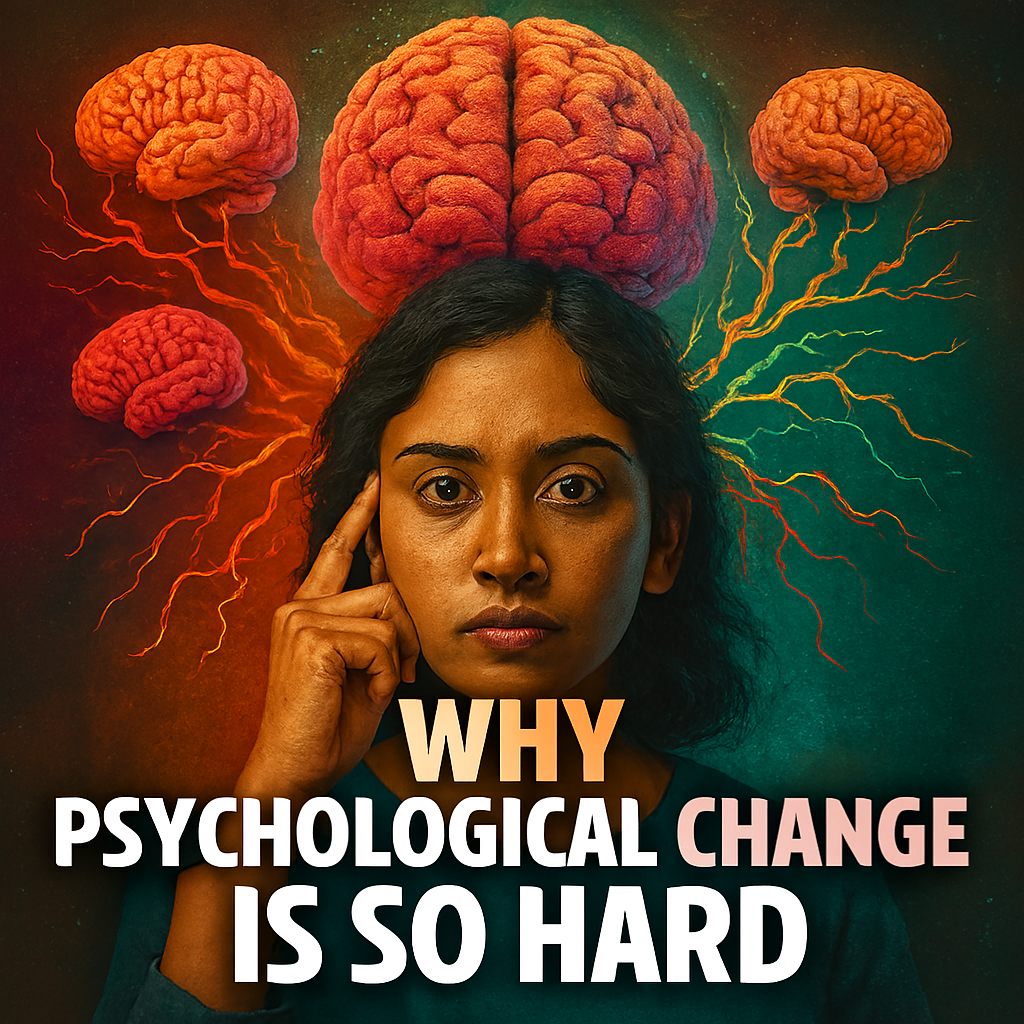
TABLE 4 — INTERNAL CONFLICTS THAT COMPLICATE CHANGE
| Conflict Type | Description | Resolution Strategy |
|---|---|---|
| Safety vs Growth | Desire for comfort vs need for evolution | Build emotional safety around new goals |
| Loyalty vs Autonomy | Attachment to others vs personal direction | Clarify boundaries and values |
| Identity vs Expansion | Old self-image vs emerging potential | Reframe identity as evolving |
| Fear vs Curiosity | Avoidance of risk vs desire to explore | Normalize uncertainty |
| Control vs Surrender | Need for certainty vs openness to change | Practice flexibility and trust |
CONCLUSION
Psychological change is not a single event—it is a layered, adaptive process that challenges every system within the human experience. From the brain’s preference for predictability to the emotional anchors of identity and the symbolic weight of internal narratives, each component of resistance serves a protective function. These mechanisms are not flaws; they are reflections of how deeply behavior is embedded in survival, belonging, and meaning. Change requires more than motivation—it demands energy, emotional literacy, and structural support. It calls for the revision of habits, the renegotiation of roles, and the rewriting of personal stories.
Understanding the architecture of resistance allows individuals to approach transformation with clarity and compassion. It reframes struggle as part of the process, not a deviation from it. Sustainable change is built on integration, not elimination—on the ability to hold complexity and move forward anyway. Whether the goal is healing, growth, or reinvention, the path is the same: deliberate, honest, and symbolically coherent. Psychological change is complicated because it is human. And that complexity is not a barrier—it is the blueprint.
JOIN THE DISCUSSION
What part of psychological change do you find most challenging? Have you noticed symbolic anchors or internal narratives shaping your resistance?
#PsychologicalChange #EmotionalResilience #NeurobiologyOfChange #IdentityTransformation #HabitArchitecture #SymbolicNarratives #CognitiveLoad #InternalConflict #EditorialClarity #HumanComplexity




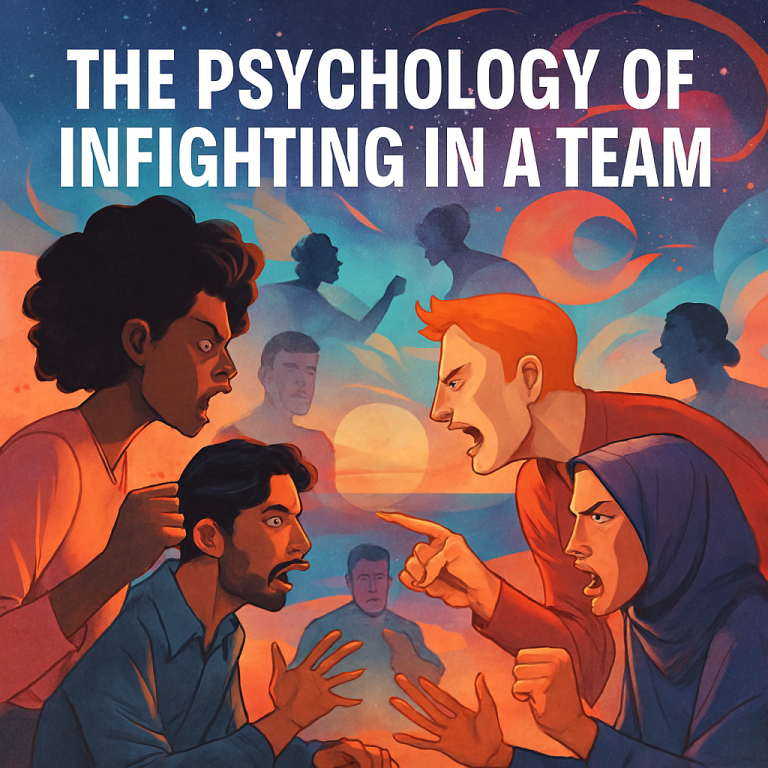
5 thoughts on “WHY PSYCHOLOGICAL CHANGE IS SO COMPLICATED”